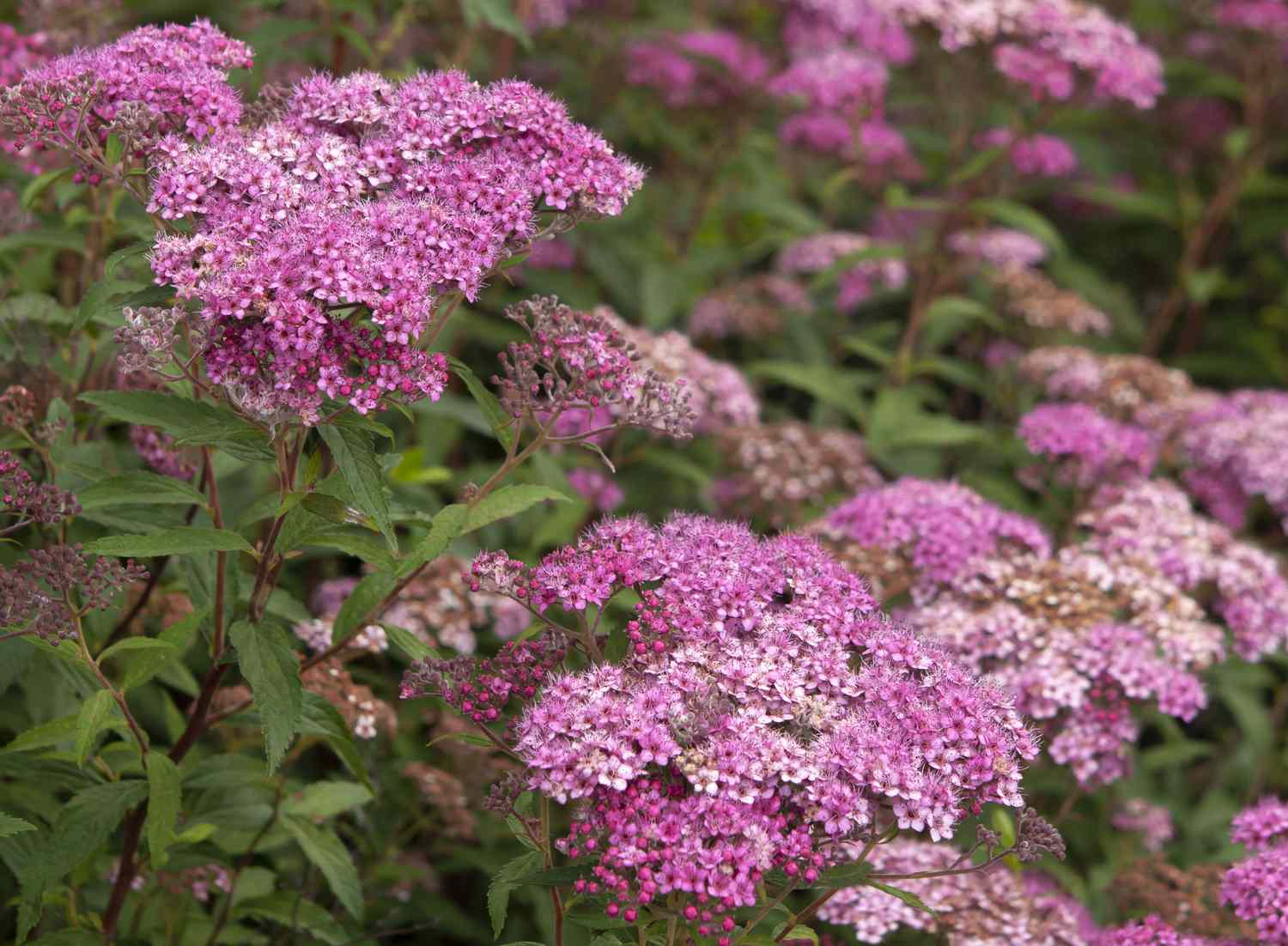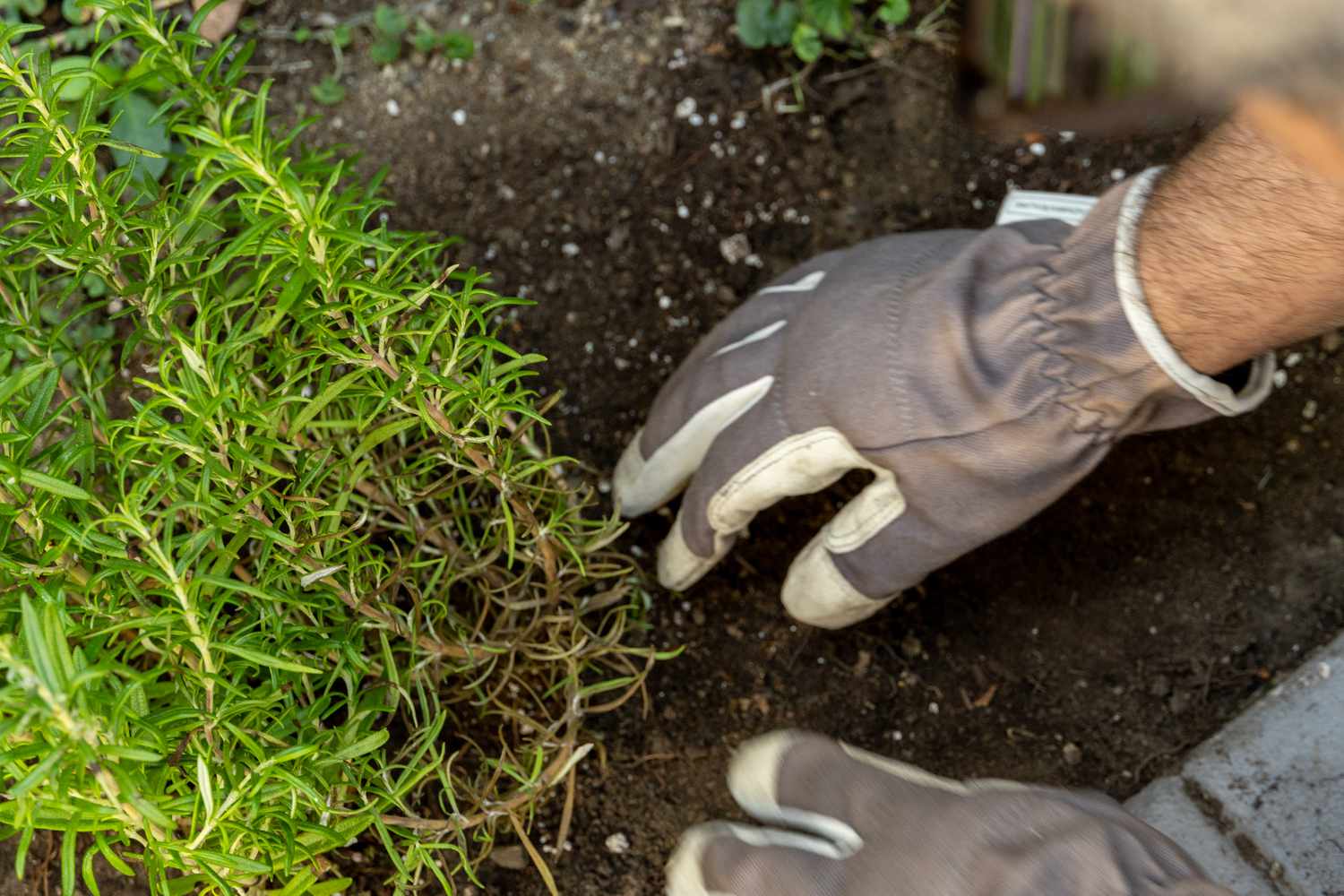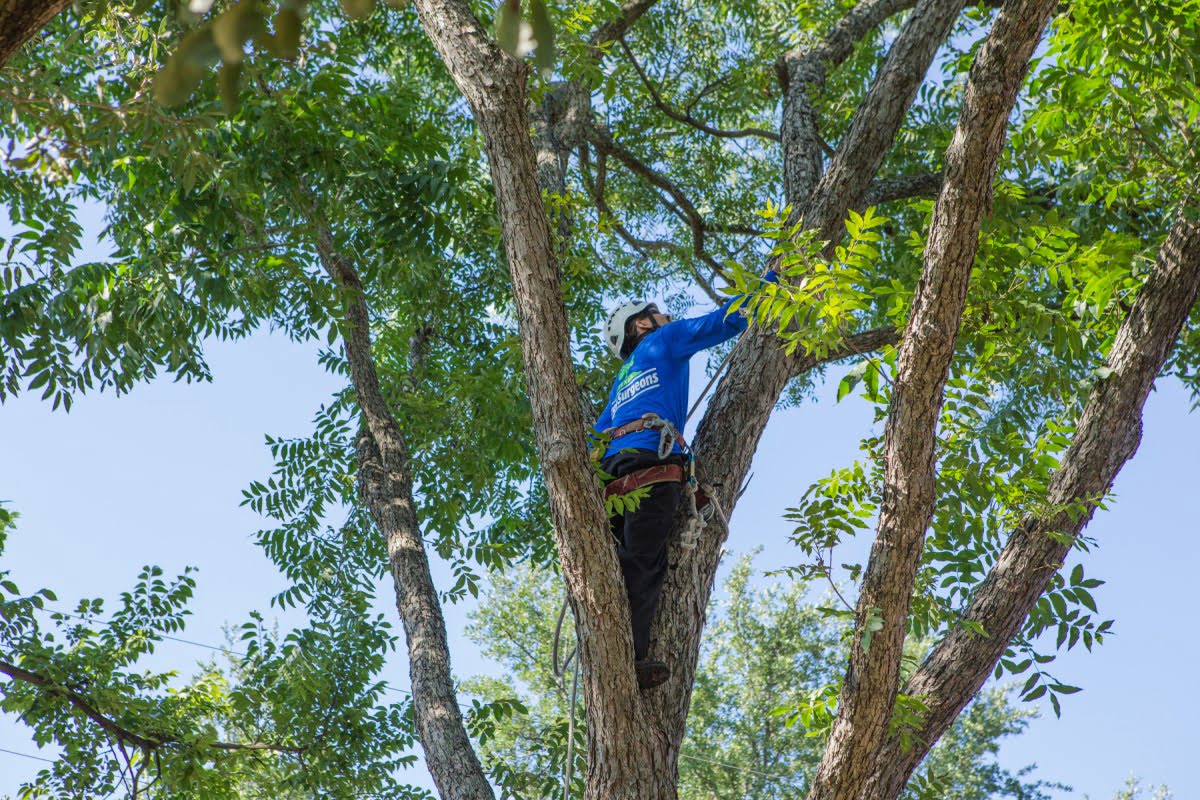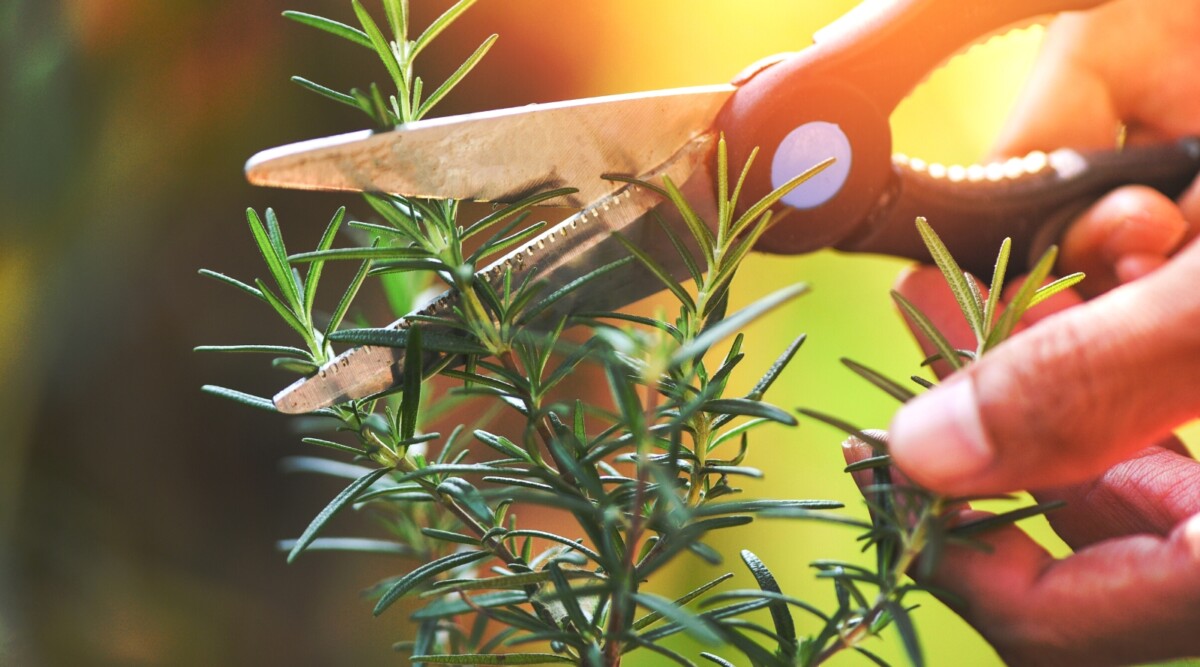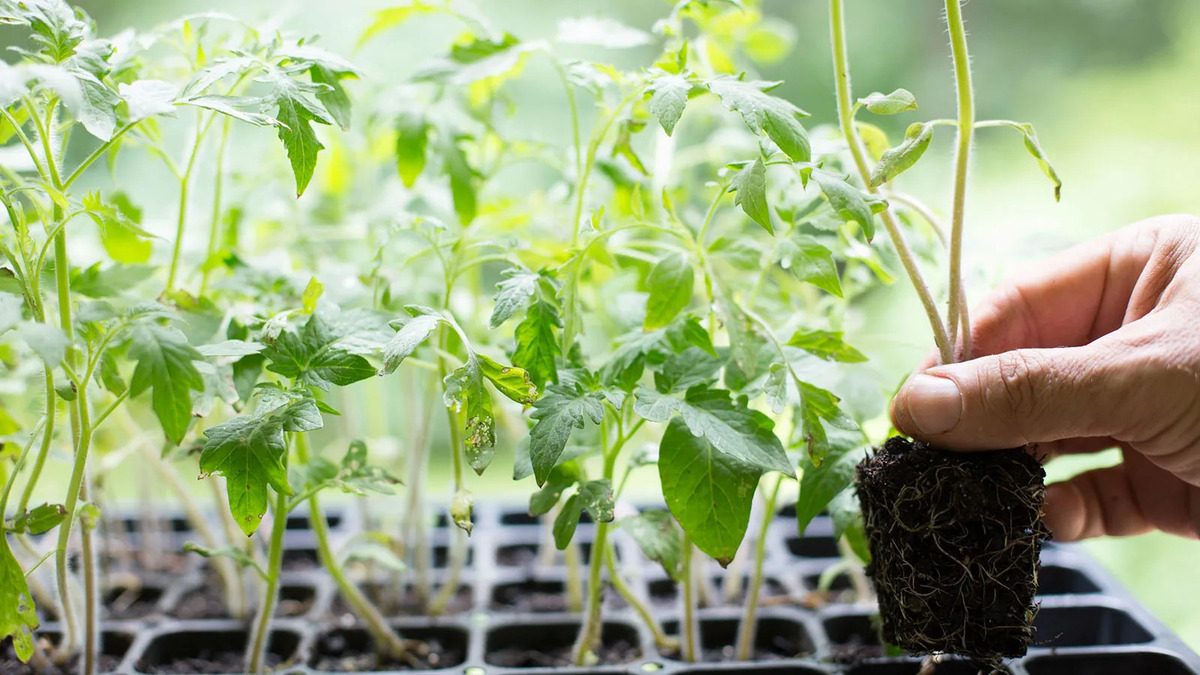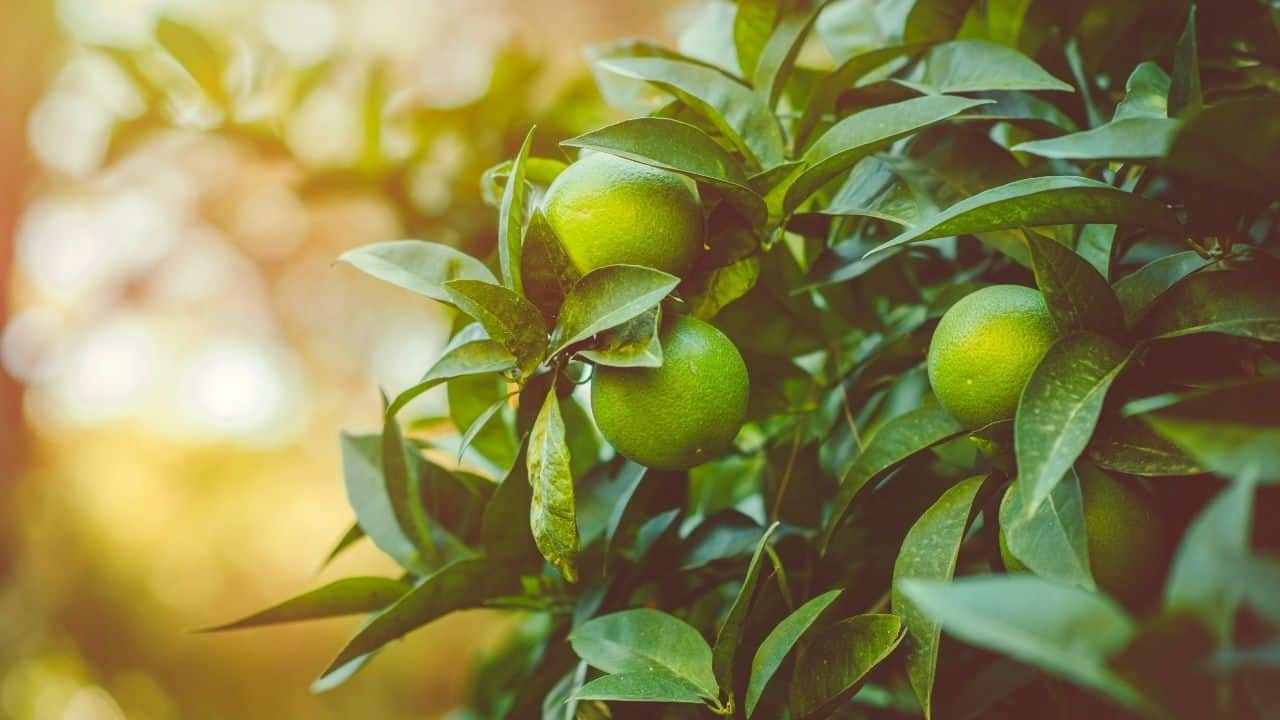Home>Gardening Techniques>Plant Care>How To Trim Shrubs And Bushes
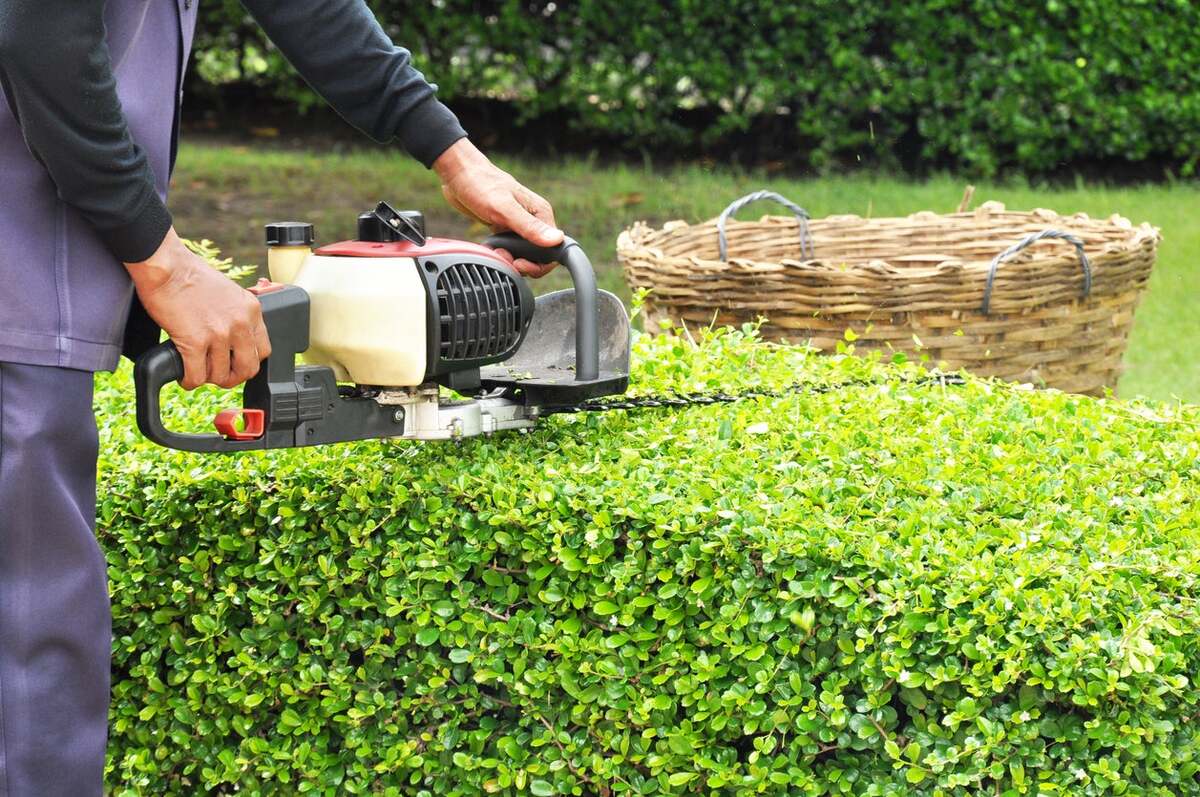

Plant Care
How To Trim Shrubs And Bushes
Modified: January 22, 2024
Learn the best techniques for trimming shrubs and bushes to maintain a beautiful garden. Get expert tips for plant care and achieve stunning results with our step-by-step guide.
(Many of the links in this article redirect to a specific reviewed product. Your purchase of these products through affiliate links helps to generate commission for Chicagolandgardening.com, at no extra cost. Learn more)
Table of Contents
Introduction
Welcome to the world of plant care! Taking care of your shrubs and bushes can be a rewarding and fulfilling experience. Whether you are a novice gardener or have years of experience, proper trimming techniques are essential to maintain the health and aesthetics of your plants. Trimming not only helps to shape and control the growth of shrubs and bushes but also promotes denser foliage and encourages new growth.
In this article, we will guide you through the process of trimming shrubs and bushes, providing you with valuable tips and techniques to ensure successful plant care. We will discuss the tools and equipment you will need, the importance of understanding growth patterns, the timing and frequency of trimming, proper trimming techniques, handling overgrown or neglected shrubs, special considerations for different types of shrubs, safety tips, and much more.
Proper trimming is crucial for the overall health and longevity of your shrubs and bushes. By removing dead or diseased branches, you can prevent the spread of diseases and improve air circulation within the plant. Trimming also helps to maintain the desired shape and size of the shrub or bush, preventing them from becoming too sparse or overgrown.
It is important to note that each shrub and bush may have different growth patterns and requirements. Understanding the specific needs of your plants will allow you to provide adequate care and achieve optimal results. Additionally, timing and frequency play a significant role in the success of trimming. Knowing when and how often to trim will ensure that your plants thrive and continue to enhance the beauty of your landscape.
So, get ready to roll up your sleeves, grab your tools, and embark on a journey to master the art of trimming shrubs and bushes. By the end of this article, you will have all the knowledge you need to confidently care for your plants and create stunning outdoor spaces.
Tools and Equipment
Before you start trimming shrubs and bushes, it’s important to gather the necessary tools and equipment. Having the right tools handy will make the process more efficient and ensure that you achieve the desired results.
Here are some essential tools and equipment you will need:
- Pruning Shears: These are small, handheld tools with sharp blades that are ideal for removing small branches and stems. Choose a pair with a comfortable grip and a strong cutting mechanism.
- Hedge Shears: These shears have longer blades and are specifically designed for trimming hedges and bushes. They allow you to shape and sculpt the foliage more precisely. Look for shears with adjustable tension and non-stick blades for easier cutting.
- Loppers: Loppers are larger, long-handled tools with a scissor-like cutting mechanism. They are perfect for pruning thicker branches that pruning shears may not be able to handle. Opt for a pair of loppers with extendable handles for reaching higher branches.
- Pruning Saw: For larger branches or overgrown shrubs, a pruning saw will be necessary. It has a toothed blade that can cut through thicker wood. Look for a pruning saw with a comfortable handle and a blade that can be replaced or sharpened.
- Gloves: Protecting your hands is crucial when trimming shrubs and bushes. Invest in a pair of sturdy gardening gloves that provide both comfort and protection. Choose gloves made of durable, puncture-resistant material.
- Eye Protection: It’s important to shield your eyes from flying debris when trimming. Wear safety glasses or goggles to prevent any potential injuries.
- Ladder or Step Stool: If you have tall shrubs or bushes, you may need a ladder or step stool to reach higher branches. Choose a stable and sturdy option to ensure your safety while working at elevated heights.
- Wheelbarrow or Garden Cart: Having a wheelbarrow or garden cart nearby will make it easier to collect and transport the trimmings and debris from your plants.
These are the basic tools and equipment you will need for trimming shrubs and bushes. Depending on the size and specific needs of your plants, you may require additional tools such as a pole pruner or a chainsaw. Assess your gardening needs and invest in high-quality tools that will last for years and make your trimming tasks easier.
Remember to clean and maintain your tools regularly to keep them in optimal condition. Dull and dirty blades can make trimming more difficult and potentially damage your plants. Keep your tools sharp and lubricated, and store them in a safe and dry place when not in use.
Understanding Growth Patterns
Before you begin trimming shrubs and bushes, it’s important to have a good understanding of their growth patterns. Each plant species has its own unique growth habits, and knowing how they grow will help you make informed decisions when trimming.
Here are some key factors to consider when understanding growth patterns:
- Branching Habit: Some shrubs and bushes have a more upright, vertical growth habit, while others tend to have a spreading or cascading form. Understanding the natural branching habit of your plants will guide you in shaping them appropriately.
- Apical Dominance: Many shrubs and bushes exhibit a growth pattern where the central, main stem or branch dominates over the lateral branches. This is known as apical dominance. By understanding this concept, you can prune to encourage branching and create a fuller, more balanced plant.
- Rejuvenation: Some shrubs benefit from rejuvenation pruning, where older branches are pruned down to the ground to stimulate new growth. Research the specific requirements of your shrubs to determine if this pruning technique is suitable.
- Flowering Time: Knowing when your shrubs bloom is important when determining the best time to trim. Some plants flower on old wood, meaning they produce blooms on branches that grew in the previous season. Others flower on new wood, meaning they produce blooms on branches that grow in the current season. Trimming at the wrong time may result in diminished flowering.
- Foliage Density: Different shrub varieties have varying foliage densities. Some have dense foliage that can tolerate more aggressive pruning, while others have sparse foliage that requires more careful and selective trimming. Understanding the foliage density will help you determine the best approach.
Observing your shrubs and bushes throughout the growing season will give you valuable insights into their growth patterns. Take note of how they respond to pruning and adjust your techniques accordingly. Some plants may require regular, light pruning to maintain their shape, while others may only need occasional pruning to remove dead or damaged branches.
Keep in mind that not all shrubs and bushes need extensive pruning. Some may naturally have a compact, well-behaved growth habit that requires minimal trimming. Understanding the growth patterns of your plants will help you strike the right balance between promoting healthy growth and preserving their natural beauty.
By taking the time to comprehend the growth patterns of your shrubs and bushes, you can tailor your trimming techniques to suit their individual needs. This will ensure that you achieve the desired results and maintain the overall health and vitality of your plants.
Timing and Frequency of Trimming
The timing and frequency of trimming are crucial factors in achieving successful results and maintaining the health of your shrubs and bushes. Trimming at the right time ensures that you don’t disrupt the plant’s natural growth cycle or inhibit its ability to produce flowers.
Here are some general guidelines for the timing and frequency of trimming:
- Spring Trimming: Most shrubs and bushes benefit from a light pruning in early spring before new growth begins. This allows you to remove any winter damage, dead or diseased branches, and provides a clean slate for the plant to start its new growth.
- Summer Trimming: During summer, you can perform more substantial pruning to shape and control the growth of your shrubs and bushes. This is also a good time to remove any excessive growth or unruly branches.
- Flowering Shrubs: For shrubs that bloom on old wood, such as lilacs or hydrangeas, it’s important to time your trimming immediately after they finish flowering. This ensures that you don’t accidentally remove the buds for next year’s blooms.
- Evergreen Shrubs: Evergreen shrubs can be trimmed throughout the year, as they do not go dormant like deciduous plants. However, early spring and late summer are generally the optimal times for pruning them.
- Trimming Frequency: The frequency of trimming depends on the growth rate of your shrubs and bushes. Some may require annual pruning, while others may need to be trimmed two or three times a year. Regular maintenance trimming helps to promote healthy growth and maintain the desired shape.
When planning your trimming schedule, consider the specific needs of each shrub or bush. Research their flowering times, growth habits, and recommended pruning techniques. Remember that excessive pruning can stress the plant and impact its overall health, so it’s best to avoid excessive or aggressive trimming.
Before you start trimming, take a close look at your plants and assess their needs. Remove any damaged or diseased branches first, as they can negatively affect the overall health of the plant. Then, proceed with selective pruning to shape and control the growth, keeping in mind the natural growth patterns of the shrub or bush.
By timing your trimming correctly and adjusting the frequency to suit the growth rate of your plants, you will maintain the health and beauty of your shrubs and bushes throughout the year.
Proper Techniques for Trimming Shrubs and Bushes
Trimming shrubs and bushes requires careful attention to detail and proper techniques to ensure that you achieve the desired results without causing damage to the plants. Here are some essential techniques to keep in mind:
- Start with Clean Tools: Before you begin trimming, make sure that your tools are clean and sharp. Dull blades can cause jagged cuts, which can lead to disease and slower healing. Disinfect your tools with rubbing alcohol or a bleach solution to prevent the spread of any potential diseases.
- Remove Dead or Diseased Branches: Begin by removing any dead or diseased branches. These branches not only detract from the appearance of the plant but can also spread diseases to healthy parts. Cut them back to the nearest healthy branch or the main stem.
- Use Proper Angled Cuts: When trimming branches, make sure to cut just above a bud or a lateral branch. Use clean, angled cuts that slope away from the bud or branch to promote healing and prevent water accumulation. Avoid leaving stubs, as they can die back and invite pests and diseases.
- Trim for Plant Health and Shape: As you trim, focus on maintaining the overall health and shape of the shrub or bush. Remove any crossing or rubbing branches that can hinder growth and cause damage. Aim for an open structure that allows air and sunlight to penetrate the plant.
- Step Back and Assess Regularly: Throughout the trimming process, step back and assess the plant’s shape and balance. Take breaks to evaluate how your trimming efforts are shaping the overall appearance. This will help you make adjustments and ensure an even and well-proportioned result.
- Maintain Proportions: When trimming, consider the natural growth habit of the shrub or bush. Maintain the proportions by trimming less from the top than from the sides. This will prevent the plant from becoming top-heavy and give it a more balanced and aesthetically pleasing shape.
- Be Mindful of Flowering Shrubs: If you are trimming a flowering shrub, be cautious not to remove branches that will produce blooms. Research the specific flowering times and pruning recommendations for your particular shrub to ensure that you don’t unintentionally diminish its floral display.
Remember, less is often more when it comes to trimming shrubs and bushes. Avoid excessive pruning, as it can weaken the plant and lead to fewer blooms or stunted growth. It’s better to take a cautious approach and make selective cuts as needed, rather than overtrimming and potentially harming the plant.
By following these proper trimming techniques, you will achieve healthy, well-maintained shrubs and bushes that enhance the beauty of your landscape.
Dealing with Overgrown or Neglected Shrubs
Over time, shrubs and bushes can become overgrown or neglected, requiring special attention to bring them back to their optimal health and appearance. Dealing with overgrown plants can be challenging, but with proper techniques, you can rejuvenate them and restore their beauty. Here’s how to deal with overgrown or neglected shrubs:
- Assess the Plant: Before you begin trimming an overgrown shrub, take a step back and assess its overall condition. Look for any dead or diseased branches that need to be removed. Identify the areas where the plant has become excessively dense or misshapen.
- Gradual Reduction: When tackling an overgrown shrub, it’s best to use a gradual reduction approach. Rather than cutting back the entire plant at once, remove no more than one-third of the shrub’s total size in a single year. This minimizes stress and shock to the plant, allowing it to recover more effectively.
- Renewal Pruning: For severely overgrown shrubs, you may need to implement renewal pruning. This technique involves removing older, thicker branches from the base of the plant to allow fresh, new growth to take over. This approach helps rejuvenate the shrub and gives it a fresh start.
- Thinning Out: Overgrown shrubs often suffer from excessive density, which restricts air circulation and sunlight penetration. Thin out the shrub by selectively removing whole branches or selectively cutting back crowded areas. This will improve the overall health of the plant and encourage new growth.
- Regular Maintenance: Once you have successfully restored an overgrown shrub, it is crucial to establish a regular maintenance routine. Regular pruning, done at the appropriate times and using proper techniques, will help prevent the shrub from becoming overgrown again.
- Fertilization and Watering: Overgrown or neglected shrubs may benefit from additional nutrients and water. Apply a balanced slow-release fertilizer to provide necessary nutrients and water the plant deeply to encourage healthy growth. Consult a gardening professional for specific recommendations based on the type of shrub you are dealing with.
- Patience and Time: Restoring an overgrown or neglected shrub will take time and patience. It may require multiple years of pruning and care to fully rejuvenate the plant. Be consistent with your efforts and monitor the shrub’s progress, adjusting your maintenance practices as needed.
Dealing with overgrown or neglected shrubs requires a careful balance of trimming and rejuvenation techniques. It’s important to take a gradual approach, allowing the plant to recover and regrow naturally. With time and proper care, you can transform an overgrown shrub into a healthy and vibrant focal point in your garden.
Special Considerations for Different Types of Shrubs
When it comes to trimming shrubs, it’s important to consider the specific needs and characteristics of each plant species. Different types of shrubs have distinct growth habits, flowering patterns, and pruning requirements. Understanding these special considerations will help you provide the best care for your specific shrubs. Here are some key points to keep in mind:
- Deciduous Shrubs: Deciduous shrubs lose their leaves during the winter months. These shrubs benefit from pruning during their dormant period in late winter or early spring. This allows you to shape the plant before new growth emerges.
- Evergreen Shrubs: Evergreen shrubs retain their leaves throughout the year. They can be pruned in early spring or late summer, depending on their growth habits. Take care not to remove too much foliage at once, as it can stress the plant.
- Flowering Shrubs: Flowering shrubs have different requirements depending on whether they bloom on old wood or new wood. Shrubs that bloom on old wood, such as lilacs and forsythias, should be pruned immediately after they finish flowering to avoid removing buds for next year’s blooms. Shrubs that bloom on new wood, like hydrangeas and butterfly bushes, can be pruned in early spring before new growth begins.
- Shrubs with Unique Growth Habits: Some shrubs, such as roses and climbing plants, have unique growth habits that require specialized pruning techniques. Research the specific pruning guidelines for these shrubs to ensure that you are trimming them correctly.
- Size and Shape: Consider the natural size and shape of the shrub when trimming. Some shrubs, like boxwoods and hedges, are often trimmed into formal shapes and require frequent maintenance to retain their form. Others have a more natural growth habit and may only need pruning to remove dead or damaged branches.
- Disease-Prone Shrubs: Certain shrubs are more prone to diseases, such as azaleas and rhododendrons. When trimming these shrubs, take extra precautions to avoid creating open wounds or spreading diseases. Disinfect your tools before and after each cut if working with diseased plants.
- Consulting Experts: If you are unsure about how to prune a specific type of shrub, consult gardening experts or reference reliable resources. Every shrub has its individual requirements, and it’s important to tailor your trimming techniques accordingly.
By considering the special considerations for different types of shrubs, you can ensure that you provide the appropriate care for each plant. This will result in healthier shrubs, enhanced flowering, and overall improved aesthetics in your garden.
Safety Tips for Trimming Shrubs and Bushes
While trimming shrubs and bushes can be a rewarding and enjoyable task, it’s important to prioritize safety to prevent accidents and injuries. By following these safety tips, you can ensure a safe and successful trimming experience:
- Wear Protective Gear: Always wear protective gear, including safety goggles, gloves, and long-sleeved clothing, to protect yourself from sharp branches, debris, and potential allergic reactions to plants.
- Use Proper Tools: Ensure that you are using the right tools for the job. Sharp and well-maintained pruning shears, loppers, and saws will make the trimming process more efficient and reduce the risk of accidents.
- Secure Ladders and Step Stools: If you need to use a ladder or step stool to reach higher branches, make sure it is stable and securely positioned on a flat surface. Have someone assist you if possible, especially when working at elevated heights.
- Watch Out for Power Lines: Be mindful of nearby power lines when trimming shrubs and bushes, especially if they are located overhead. Keep a safe distance and avoid contact with power lines to prevent electrical hazards.
- Avoid Trimming Near Machinery or Power Tools: If you have machinery or power tools in the vicinity, make sure to turn them off and remove them from the area before beginning trimming. Accidental contact with these devices can result in serious injuries.
- Be Aware of Your Environment: Take note of your surroundings before starting the trimming process. Be mindful of rocks, uneven terrain, or slippery surfaces that may cause you to lose balance. Remove any obstacles or hazards from the working area.
- Take Breaks: Trimming shrubs and bushes can be physically demanding. Take regular breaks to rest, hydrate, and avoid overexertion. This will help prevent fatigue and reduce the risk of accidents caused by loss of focus.
- Keep Children and Pets Away: Ensure that children and pets are safely indoors or kept away from the trimming area. They may inadvertently get in the way or be at risk of harm from falling branches or trimming tools.
- Follow Proper Techniques: Adhere to proper trimming techniques, such as using angled cuts and removing dead or diseased branches. Improper cutting techniques can not only damage the plant but also increase the risk of accidents.
- Know Your Limits: If a shrub or bush is too tall or requires extensive pruning beyond your capabilities, consider hiring professional help. It’s better to prioritize your safety and seek assistance when needed.
By incorporating these safety tips into your trimming routine, you can protect yourself and ensure a safe and enjoyable experience. Safety should always be a top priority when working with tools and engaging in outdoor gardening activities.
Conclusion
Trimming shrubs and bushes is an essential part of plant care, allowing you to shape, control, and maintain the health and beauty of these plants. By following proper techniques, understanding growth patterns, and considering the specific needs of different types of shrubs, you can achieve successful results and create stunning outdoor spaces.
Remember to start with the right tools and equipment, including pruning shears, hedge shears, loppers, and a pruning saw. Understand the growth patterns of your shrubs, the timing and frequency of trimming, and the unique considerations for each plant species. Take your time to evaluate the shape and balance of the plant, removing dead or diseased branches and preserving its natural beauty.
When dealing with overgrown or neglected shrubs, use a gradual reduction approach, implement renewal pruning, and focus on thinning out densely packed areas. Be patient and consistent with your efforts, and establish a regular maintenance routine after successfully restoring an overgrown shrub.
Throughout the trimming process, prioritize safety by wearing protective gear, using proper tools, securing ladders, and being aware of your environment. Take breaks when needed, keep children and pets away from the trimming area, and know your limits to avoid accidents and injuries.
By following these guidelines, you can confidently care for your shrubs and bushes, enhancing the visual appeal of your outdoor spaces and enjoying the many benefits that well-maintained plants bring. So roll up your sleeves, grab your tools, and embark on a journey to master the art of trimming shrubs and bushes. Your plants will thank you with healthy growth and beautiful foliage.

